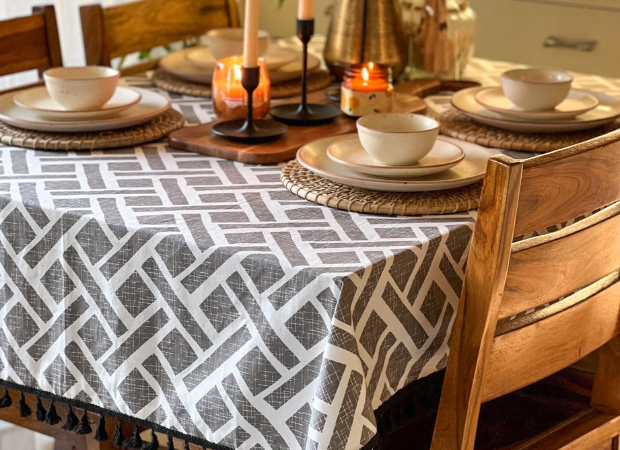3D Real Estate Photography: Enhancing Property Listings with Virtual Tours
Real estate photography has always been an essential part of showcasing properties to potential buyers.
In today’s digital age, where most homebuyers begin their search online, high-quality visuals can make a significant difference in attracting interest and ultimately selling a property.
One of the latest trends in real estate photography is the use of virtual tours to provide potential buyers with an immersive and interactive experience of a property without having to physically visit it.
The Power of Virtual Tours in Real Estate
Virtual tours allow potential buyers to take a 360-degree look at a property, giving them a sense of space, layout, and flow that traditional photographs cannot always convey. By offering virtual tours, real estate agents and sellers can engage buyers more effectively and stand out in a competitive market.
According to recent studies, listings with virtual tours receive significantly more views and are more likely to generate interest compared to those without virtual tours.
Virtual tours offer a dynamic and immersive experience for potential buyers, allowing them to virtually walk through a property from the comfort of their own home.
This technology provides a more realistic representation of the property, helping buyers to visualize themselves living in the space.
Benefits of Virtual Tours for Property Listings
One of the primary benefits of using virtual tours in property listings is that they can save time for both buyers and sellers. Instead of scheduling multiple in-person visits, potential buyers can pre-screen properties through virtual tours, narrowing down their choices based on the virtual experience. This can lead to more qualified leads and higher chances of closing a sale. Virtual tours also help in building trust with buyers as they provide a transparent view of the property, leaving little room for surprises during physical visits.
Furthermore, virtual tours can attract a wider audience, including out-of-town or international buyers who may not be able to visit the property in person. This can increase the exposure of the listing and result in a quicker sale.
For sellers, virtual tours can save time and effort by reducing the number of unnecessary showings to uninterested parties. This means that only serious buyers who are genuinely interested in the property will request a physical tour, streamlining the selling process.
Overall, virtual tours offer a convenient and efficient way to market properties, making them a valuable tool for both buyers and sellers in the real estate industry.
Enhancing the Visual Appeal of Properties
Elevate the visual appeal of properties through the art of 3D real estate photography, adding depth and dimension to listings. With immersive visuals, potential buyers can explore every detail from various angles, enhancing their engagement and interest. Experience a new level of property presentation, tailored to captivate and impress with 3D real estate photography.
This visual storytelling can create an emotional connection with potential buyers, making them more likely to envision themselves living in the property. Virtual tours provide a comprehensive and engaging way for potential buyers to explore a property without physically being there.
By showcasing a property’s key features and allowing viewers to navigate through different rooms and areas, virtual tours offer a more immersive experience compared to traditional photographs or videos.
This interactive and dynamic presentation can help buyers better understand the layout, flow, and overall feel of the property, ultimately increasing their interest and confidence in making a decision. Furthermore, virtual tours can save time for both buyers and sellers by narrowing down options and allowing for more focused and informed property viewings.
Increasing Engagement and Interest
By incorporating virtual tours in property listings, real estate agents can increase engagement with their listings and capture the attention of a wider audience. Virtual tours provide a memorable experience for potential buyers, keeping them engaged for longer periods and encouraging them to explore the property in detail.
This increased engagement can lead to more inquiries, showings, and ultimately, offers on the property. Virtual tours offer a convenient and interactive way for potential buyers to view a property from the comfort of their own homes. They allow viewers to navigate through the property at their own pace, getting a realistic sense of the space and layout. This can help to weed out less serious buyers and attract those who are genuinely interested in the property.
Real estate agents who utilize virtual tours in their listings demonstrate a commitment to utilizing technology to provide a superior experience for their clients. In a competitive market, this can set them apart from other agents and attract more clients.
Utilizing Technology for Competitive Advantage
In a competitive real estate market, utilizing technology such as virtual tours can give agents and sellers a significant advantage. Properties that offer virtual tours are more likely to stand out among the sea of online listings, attracting more attention and inquiries.
As technology continues to advance, virtual tours are becoming easier to create and more affordable, making them accessible to a wider range of real estate professionals. Virtual tours provide a realistic and immersive experience for potential buyers, allowing them to virtually walk through a property from the comfort of their own home.
This not only saves time for both the buyer and the agent but also helps to pre-qualify potential buyers as they can get a better sense of the property before scheduling an in-person showing. Additionally, virtual tours can help to showcase unique features of a property that may not be easily captured in photos alone.
They can highlight the flow of the layout, the size of the rooms, and the overall feel of the space, giving potential buyers a better understanding of the property’s potential. In a competitive real estate market, utilizing virtual tours can help agents and sellers attract more serious buyers and ultimately sell properties more quickly.
Best Practices for Creating Virtual Tours
When creating virtual tours for property listings, it is essential to follow best practices to ensure the tours are effective in engaging potential buyers. This includes using high-quality photography equipment, paying attention to lighting and staging, and utilizing interactive features to enhance the user experience.
Real estate agents can also consider partnering with professional photographers or virtual tour providers to ensure that the final product meets the highest standards and effectively showcases the property.
Additionally, it is important to make sure that the virtual tour is easy to navigate, provides accurate information about the property, and highlights its key features. Including a floor plan and incorporating video content can also enhance the overall experience for potential buyers.
By following these best practices, real estate agents can create virtual tours that effectively showcase properties and attract more interest from prospective buyers.
Conclusion
In conclusion, virtual tours have become a valuable tool in enhancing property listings and attracting potential buyers in the competitive real estate market. By offering immersive and interactive experiences, virtual tours can help buyers visualize themselves in a property and make more informed decisions. Real estate agents and sellers who embrace virtual tours stand to benefit from increased engagement, higher quality leads, and ultimately, faster sales. As technology continues to evolve, virtual tours are likely to become even more prevalent in the real estate industry, shaping the way properties are marketed and sold in the future.
Stay in touch to get more updates & news on Style Carter!






